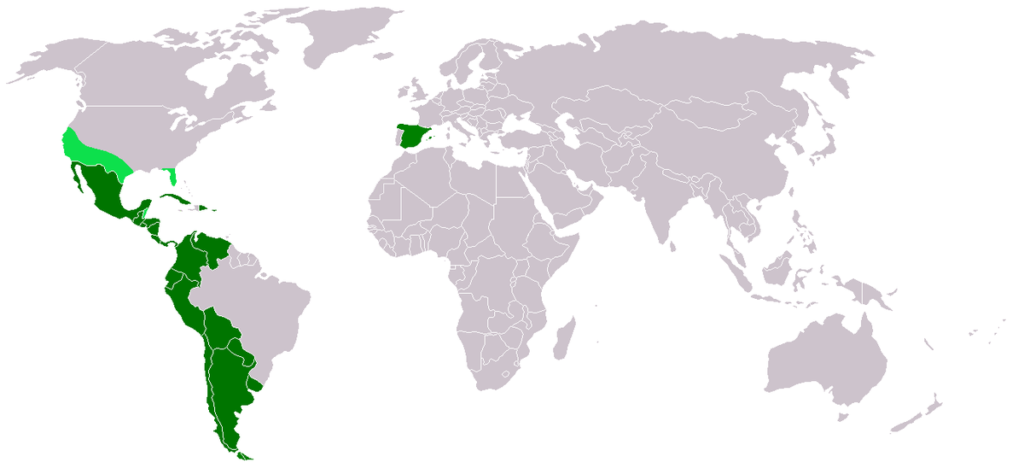Spanish is not just Spanish anywhere you go. This language is diverse and exists in different dialects that make a Spanish speaker in Spain sound different from one in Africa. If you didn’t know about all the dialects of Spanish, it’s time to take a sneak peek into the various types of Spanish that we have. You might not need to speak all the dialects of Spanish if you intend to hold a simple conversation, but if you want to connect to a particular demographic of Spanish speakers, here are a few dialects you have to worry about.

https://en.wikipedia.org/wiki/File:Map-Hispanic_countries.png#filelinks
Types of Spanish
Spanish in Europe
- Castilian: If you have ever heard anyone refer to any dialect as the general Spanish, it is most likely Castilian. The Castilian is the most popular Spanish dialect with over 45 million speakers and it has a great influence on what is referred to as the standard American Spanish. For example, the unique pronunciation of the ‘í’ sound in Castilian which sounds like the ‘the’ pronunciation in English vocabulary.
- Andalusian: Andalusian Spanish is often confused with Castilian because they sound similar. It is also spoken by a large number of people in Spain. However, the most notable difference between them is how ‘d’ is pronounced in Andalusian.
- Canarian: This type of Spanish is spoken on the Canary Islands and has been highly influenced by Portuguese due to their political history. The Portuguese historically impacted some of the cultures on the island during the colonial era. Canarian is recognised by the pronunciation of its vowels like the aspirated ‘s’ and unique pronunciation of the letter ‘h’. It also has some consonants omitted from its alphabets. On other parts of the Canary Islands where the impact of the Portuguese is not as obvious, Gibraltar is the dialect spoken instead. Unlike Canarian, Gibraltar has English influence and sound more like Andalusian than the Caribbean.
Spanish in Africa
- Equatoguinean Spanish: This Spanish dialect spoken in Equatorial Guinea sounds a lot like mixing the dialects from Europe with a few languages in Africa. Making the accent and intonation different.
Spanish in the USA
- Mexican Spanish: Also known as the Latin American is very similar to Spanish dialects from Spain and as a result, native speakers from the two parts have little difficulty understanding each other. In many instances, they have no difficulty and only notice their differences in spellings and little technicalities. States that speak Mexican Spanish include Mexico, Peru, Columbia and a host of other South American countries.
- Caribbean: The Caribbean is one of the Spanish dialects spoken in the USA and features aspirated consonants that sound like Portuguese. The Caribbean Spanish is similar to Canarian Spanish and is spoken along the East of Mexico, Central America, in Cuba and the Dominican Republic. The dialect also features a lot of elided middle consonants that makes the words sound like a string of vowels.
- Rioplatense: The population and spread of the Rioplatense dialect are not as wide as other American Spanish and is only spoken in the region between Argentina and Uruguay. The written structure of Rioplatense is barely different from the ones in Spain, however, the native speakers often sound more like Italians than they do like Spaniards because of the region’s history of immigration.
In conclusion, successful communication with any Spanish speaker involves taking into consideration the uniqueness of their dialect, especially in translation. This is because people respond better to contents that are in their native languages. Therefore, if you want to reach a market of one of the most popular languages in the world, you need to do it right. With the right translators, you will have no problem communicating in any of the various types of Spanish. TranslationsInLondon understands the nuances of the different dialects and can carry out the proper translation for your contents.

